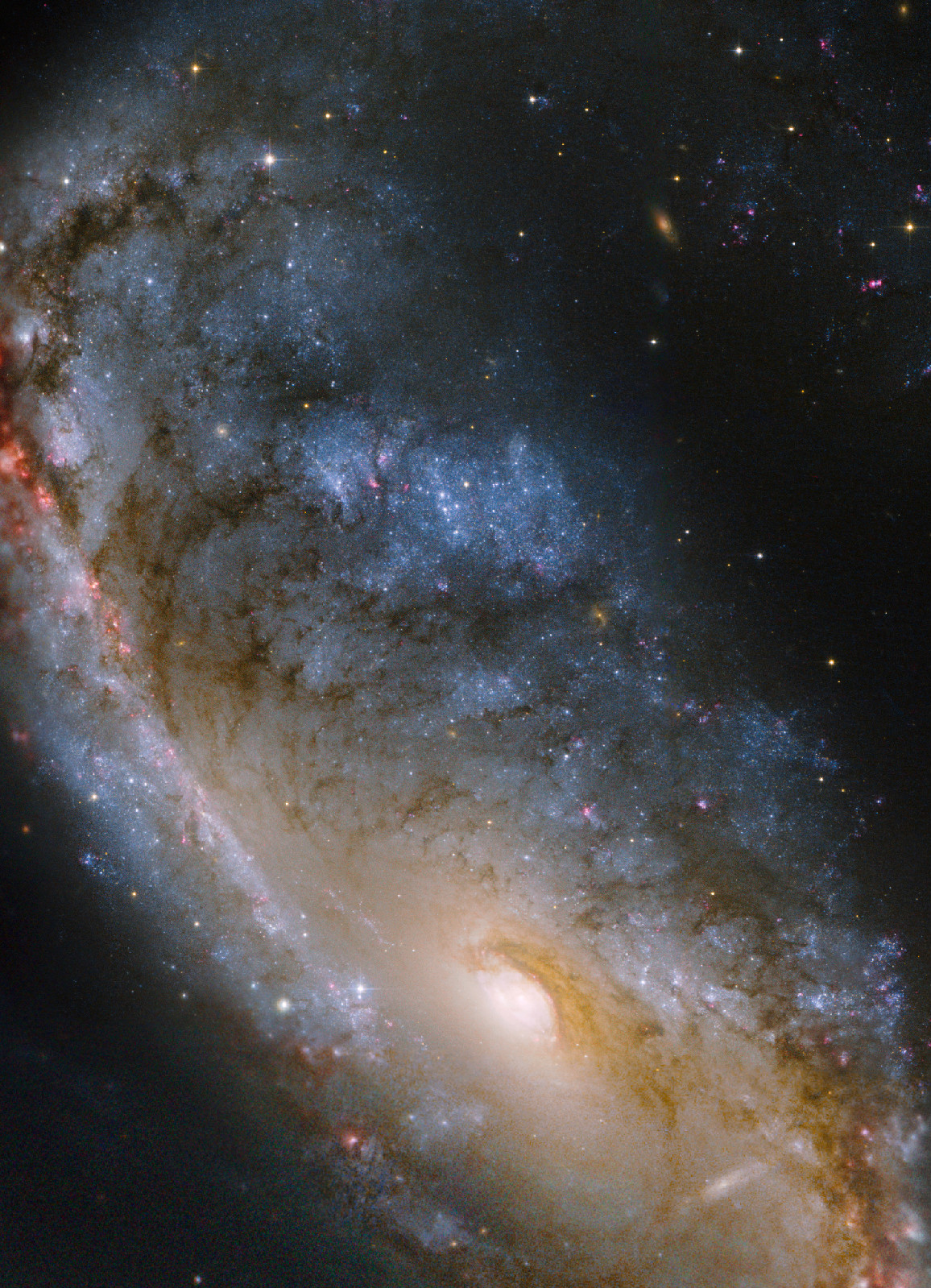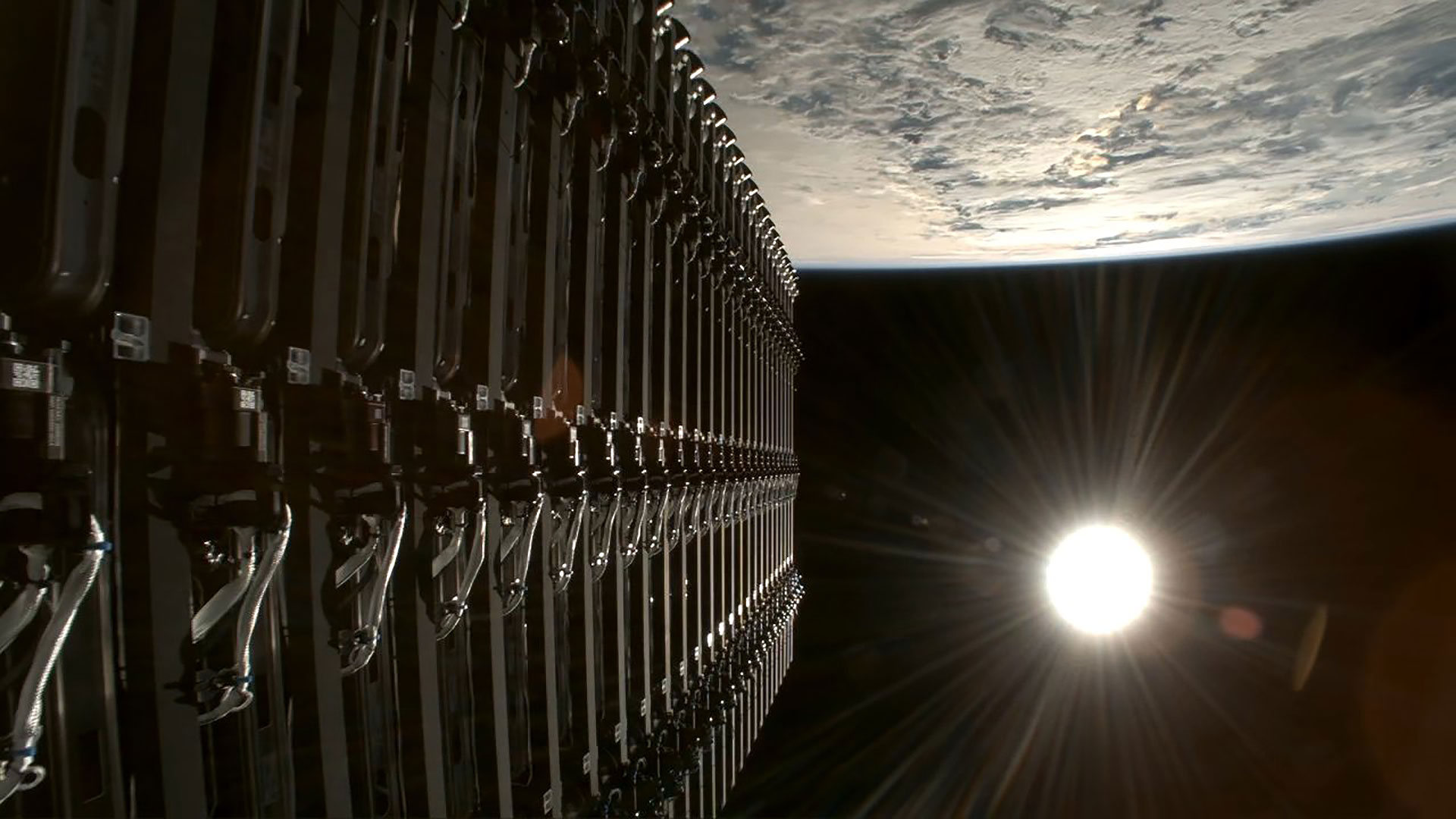New Photos Show Lopsided Galaxy Called 'Meathook'

A spiral galaxy with a dramatic lopsided shape is featured in contrasting views from two telescopes.
The asymmetrical Meathook galaxy, or NGC 2442, has one spiral arm tightly folded in on itself and is the site of a recent supernova. The other arm, which is dotted with recent star formation, extends far out from the galactic nucleus. [Photo of the lopsided galaxy NGC 2442]
The galaxy was imaged by NASA and the European Space Agency's Hubble Space Telescope, and the MPG/ESO 2.2-meter telescope at the La Silla Observatory in Chile.
The Meathook galaxy – so called because of its off-kilter shape – is found in the southern constellation of Volans (The Flying Fish), about 50 million light-years away. The galaxy is easily recognizable by its asymmetrical, dusty spiral arms. [Video: Zoom Into the Meathook Galaxy]
While the galaxy's lopsided appearance is thought to be the result of gravitational interactions with another galaxy at some point in its history, astronomers have not yet been able to positively identify the culprit.
A close-up view of the galaxy by the Hubble telescope focuses on the galaxy's nucleus, as well as the more tightly wound of its two spiral arms. In 1999, a massive star ended its life in a supernova explosion in this arm. [Spectacular Photos From the Hubble Telescope]
By comparing older ground-based observations, previous Hubble images that were taken in 2001, and these images from late 2006, astronomers have been able to conduct detailed examinations of what happened to the star in its death throes. By the time these images were taken, the supernova itself had faded and was not visible.
Breaking space news, the latest updates on rocket launches, skywatching events and more!
The Wide Field Imager on the MPG/ESO 2.2-meter telescope took a much wider view of the Meathook galaxy that shows the double-hook shape that gives the galaxy its nickname.
This broader image also captures several other galaxies close to NGC 2442, as well as many more remote galaxies that form the picture's rich backdrop.
The ground-based Wide Field Imager can cover big sections of the sky in a single exposure. This, combined with the sharp images from Hubble in space can provide complementary information to astronomers.
The different views also give a more complete picture of what is happening within the galaxy. ESO's observations highlight the other end of the life cycle of stars, compared to Hubble.
Dotted across much of the galaxy, and particularly in the longer of the two spiral arms, are patches of pink and red. This color comes from hydrogen gas in star-forming regions: powerful radiation released by newborn stars disturbs the gas in the clouds they are formed from, making the areas glow a bright shade of red.
The interaction with another galaxy that may have given the Meathook galaxy its unusual lopsided shape is also likely to have been the trigger of this recent episode of star formation. The same tidal forces that deformed the galaxy disrupted the clouds of gas and triggered their gravitational collapse.
Follow SPACE.com for the latest in space science and exploration news on Twitter @Spacedotcom and on Facebook.

Space.com is the premier source of space exploration, innovation and astronomy news, chronicling (and celebrating) humanity's ongoing expansion across the final frontier. Originally founded in 1999, Space.com is, and always has been, the passion of writers and editors who are space fans and also trained journalists. Our current news team consists of Editor-in-Chief Tariq Malik; Editor Hanneke Weitering, Senior Space Writer Mike Wall; Senior Writer Meghan Bartels; Senior Writer Chelsea Gohd, Senior Writer Tereza Pultarova and Staff Writer Alexander Cox, focusing on e-commerce. Senior Producer Steve Spaleta oversees our space videos, with Diana Whitcroft as our Social Media Editor.

